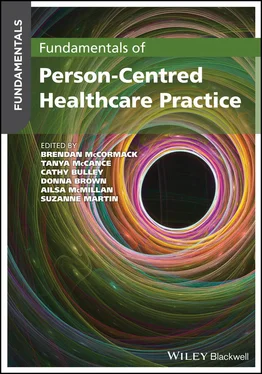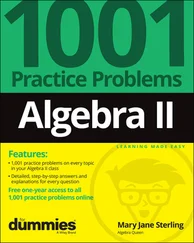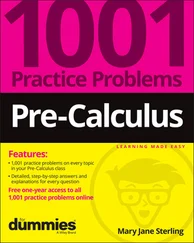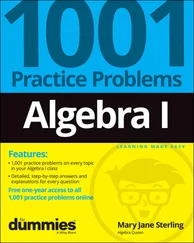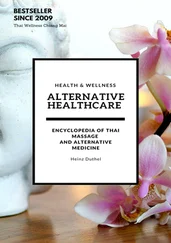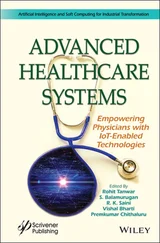| Condition and description |
Reflective questions |
| Bounding and framingBeing strong is a characteristic of our humanness that enables us to meet the challenges and opportunities of each day and draw on our inner strengths to achieve what we want to and need to. However, being strong and having strength also place significant responsibilities on us as persons as we strive to meet what may at times seem like unrealistic or unachievable expectations of ourselves and others. Sometimes these responsibilities can seem overwhelming and we need to bound or frame our focus so we can make sense of the whole by concentrating on particular parts. Understanding the importance of bounding and framing enables an appreciation of wanting to still the mind and zone out the many distractions that get in the way of us flourishing in life and work. Finding moments of stillness and intentionally focusing only on the issues at hand enables growth, movement and a greater potential to flourish |
What do you prioritise in your practice – what is in the foreground and the background of your practice? |
| What strategies do you use to create your priorities? |
| How do you stay strong? |
| What processes do you use to still your mind, create focus and build your strength as a person? |
| Co‐existenceIt is the case that in everyday life/practice the context can appear impenetrable, such as navigating through unnecessary hierarchies, being restrained by nonsensical rules, people being resistant to change, and little space for growth and development. However, these challenges are important for us to connect with. Gaffney (2011) identifies ‘connectivity’ as one of the four elements of flourishing persons. Connectivity implies being attuned to what is happening inside and outside of us. Being attuned to these connections enables us to recognise when disconnections are happening and for us to be able to rise to the challenges associated with such disconnections. |
What energy do you use in your daily work/life? (emotional, physical, spiritual, etc.) |
| What kinds of energy do you draw upon (these might include inspiration from colleagues, from nature, from art, etc.)? |
| How do you stay connected with others to maximise energy and be efficient in your use of energy? |
| Embracing the known and yet to be knownThe philosopher John O'Donohue (1997) argues that for persons to be present in the moment, there is a need for us to be rooted in the here and now. ‘Being present’ is an important element of authentic and compassionate caring and the person who is ‘present’ has the potential to engage with the other in what O'Donohue has called ‘Anam Cara’ or soul friend to whom intimate connections can be formed. Through the development of connected relationships, the hidden beauty of each person can be revealed and unfolded. When we move around our workplaces with our eyes, ears, sense of smell, touch and taste wide open, ‘hidden gems’ emerge. As we rush around at work, our senses are often half shut down. If we do not pay attention we can miss the gems and the beauty around us. |
How do you maintain your relationships at work and personally? |
| Are you aware of different relationships and how they affect your energy levels? |
| What do you do about that? |
| What strategies do you use to stay engaged in the moment, i.e. be present? |
| Living with conflicting energiesGaffney (2011) argues that ‘challenge’ is a key element of flourishing and that without challenge we would languish in the safety of established habits and norms. Challenges aren't always of our own making, but can arise from unexpected and unanticipated avenues and directions. Every day, we have encounters with others that challenge us and we have a choice in how we react. We may feel irritated and need to work hard to reframe the encounter as an opportunity for loving kindness and connection with the other. This movement and management of feelings draws on our emotional intelligence. Moreover, it also needs us to dance with our spiritual intelligence so that we can give graceful care and focused attention to the person or situation. Being really present for that particular person, persons or situation can also help us to reframe the experience as an opportunity for holding strong to our values and our response to its challenges as a means of enabling our own and others' human flourishing. This is not easy, but it is something we can strive for. |
How do you deal with everyday challenges from others? |
| What intelligences do you mostly draw upon when you experience challenge? |
| Are you aware of your more dominant response to challenge and can you draw on different intelligences to enhance or improve your response? |
| Being stillCreating different and complementary spaces for different purposes is an important consideration in enabling human flourishing. Creating spaces for quiet reflection and stillness is a real challenge in busy healthcare environments and there is a need for us to pay more attention to the workings of healthcare environments and how they function. We need to be able to clear our minds of the busyness of practice and focus instead on the meanings of our practice and the way these meanings shape our everyday reality. Creating spaces for quiet reflection, critical engagement and meaningful connection with others are essential elements of an environment that enables all persons to flourish. |
How do you create stillness in your daily life? |
| Are you aware of the ‘mental clutter’ that clouds your thinking and a focus on busyness? |
| What strategies do you use to reduce the clutter and busyness? |
| Embodying contrastsWhen we are flourishing we bring all aspects of ourselves as we develop our potential. Being attuned to all that is good, beautiful and harmonious brings us closer to recognising the sanctity of person‐centred human relationships. It helps us to experience our greater selves, the person we are when we are at our best (as opposed to languishing when we are at our worst). Connecting with what we consider to be ‘sacred’ is important here. The sacred is not the same as having a religious faith or belief or living a life shaped by doctrines. Whilst some of us may have such a faith, what we are concerned with here is more related to a sense of awe and wonderment at goodness, beauty, harmony, compassion and loving kindness – and with honouring them. |
Do you pay attention to issues/ideas/actions that might seem to be insignificant to you or others, but which have the potential for deep learning and development? |
| What strategies do you use in your everyday work and life to create ‘wonderment’ at the ordinary things of life? |
| Do you appreciate contrasts that exist between you and your co‐workers? If so, in what way and how do you make use of these contrasts? |
| HarmonyThere is no beginning and no end to flourishing. Each element of our life melds and blends with the whole and with each other element. Another way of looking at this is to see each element as bounding and framing the whole of human flourishing. This realisation and acknowledgement of a continuous and connected journey of flourishing rather than a prescribed structure resonates with the need to respond to the wisdom of our bodies in decision making. No matter how much control we may feel over our lives, many internal and external influences shape us and the conditions that enable us to flourish as persons (or not). This is not to suggest a fatalistic perspective but is instead an understanding and position that recognises the interconnectedness of persons, the environment and the universe. Without an appreciation of these deep connections and an understanding of the need to actively shape our being in the world, then our potential for flourishing may not be realised. |
How do you develop your preparedness for a continuous approach to self‐growth and development? |
| How do you show loving kindness for yourself and others? |
| What mindful practices do you use to build loving kindness for yourself and others? |
